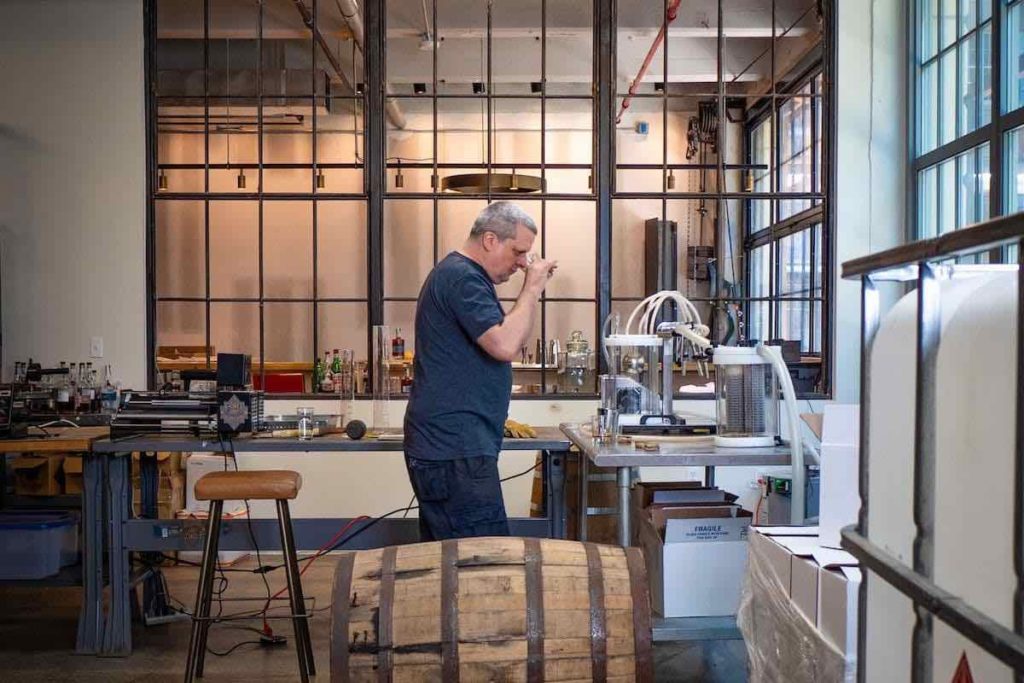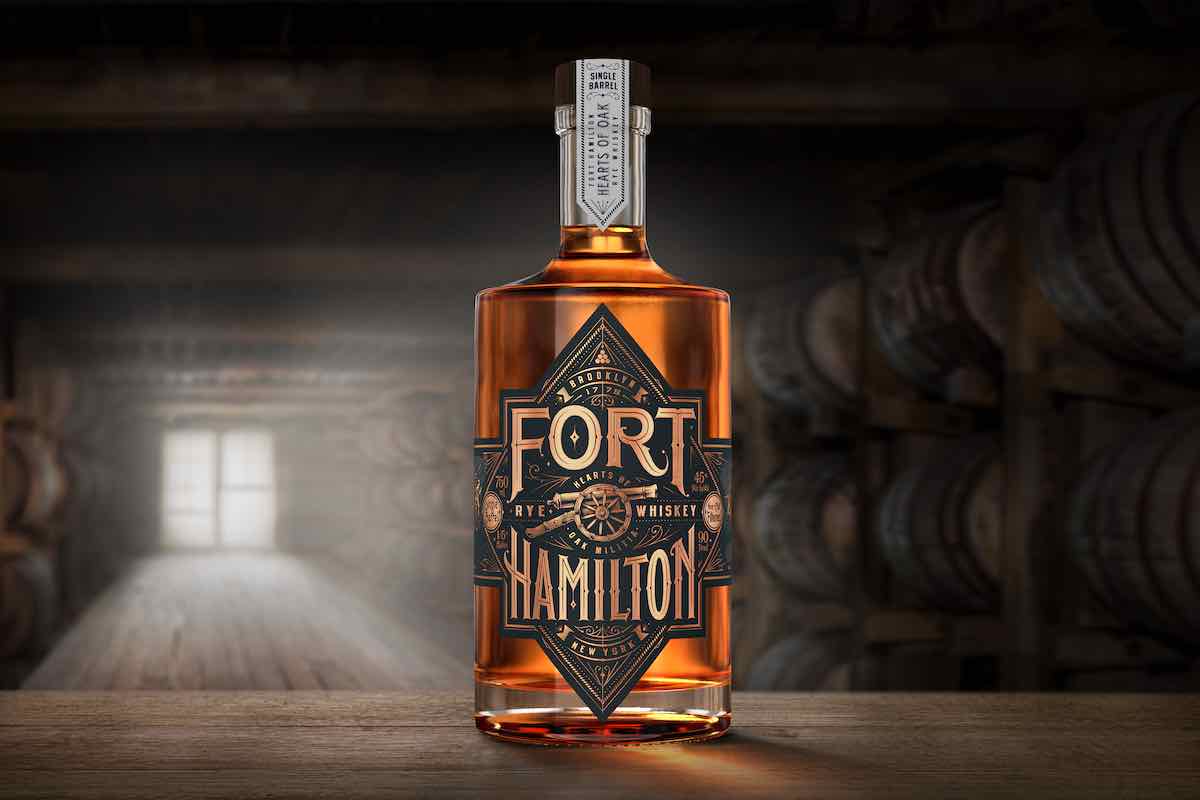We’ve all heard of a New York state of mind. But how about a New York state of rye? Leading the charge to make that happen is Brooklyn’s Fort Hamilton distillery, which was established in 2016 but has made its mark reviving the once-ubiquitous category of New York-style rye. It’s a crusade of sorts for co-founder Alex Clark, a British expat who left a career in currency trading to bartend in New York.
As Clark built a hospitality career that led to work in high-end venues like Marea and Balthazar, he noticed that something was off with the most widely available rye whiskeys: corn.
“We are putting all these great ingredients together in this classic style, but the main ingredient in these drinks has been ignored,” Clark says. “These are Pennsylvanian-named brands that are made in Kentucky with lots of corn, and there seems to be a big disconnect there.”
Returning to the Source
This led Clark to do his own research on the history of rye whiskey. In addition to the most widely recognized historical styles—Maryland, which includes corn in its mash bill, and Monongahela, which was exclusively rye or rye with malted barley—Clark uncovered the New York style, which he found to predate Monongahela.
According to Clark, New York was the epicenter of whiskey production during the colonial era, and rye dominated as the grain was favored by farmers for its use as a cover crop to guard topsoil against erosion during brutal Northeastern winters. However, it was felled by a variety of factors, including the emigration of distillers to the South and West to avoid taxation, the urbanization of New York City, and the disruption of Prohibition that left only Southern distilleries intact to produce “medicinal” whiskeys.

But no factor may have been as damaging as government subsidies to corn producers, which gave distillers an economic incentive to prioritize corn over rye. While it had suffered many blows, Clark decided it was time to help New York-style rye get back on its feet.
“I felt like the state of New York needed to bring this whiskey back to life,” he says. “Why does Kentucky get to centralize all whiskey distillation in America? It doesn’t make any sense. It’s only legislation, Prohibition, and corn subsidies that forced the flavor profile of whiskey in America in that direction, and it’s been stuck for decades.”
A Rye-Soaked Comeback Story
While Fort Hamilton has a Brooklyn distillery that’s been distilling a soon-to-be-released gin, its New York Single Barrel Rye is sourced from the Taconic Distillery in Upstate New York. There it’s made to specifications following the style’s historic profile, including that it be made from 90% New York rye and 10% New York barley, aged in heated rickhouses, and matured in char-three 30-gallon oak casks rather than the 53-gallon industry standard that only emerged following WWII.
“We wanted to get into the meat and potatoes of what makes New York whiskey fabulous, and then recreate it,” Clark says.
After being aged for three and a half years and proofed down to 45% ABV, the result is a whiskey possessed of the same oily body and chewy texture found in Monongahela ryes, yet more subtle in its deployment of spice and packed with a rich, bready flavor that recalls a good piece of dark French toast soaked in syrup.
The brand also produces a cask-strength version of the New York Single Barrel, which is aged for four years and bottled at 58.5% ABV. This stronger sibling brings out much more of that rye flavor, though not exactly in the way many rye drinkers would expect. Rather than a firecracker, it’s a measured journey that doubles-down on the bready side of rye, making one feel as if you’ve just bitten into a particularly moist and fresh loaf of dark rye bread with sweet syrup and caramel on the side.
New York-style rye may have had a rough last century, but if the revival led by Fort Hamilton is any indication, 2022 could be its best year in decades.



